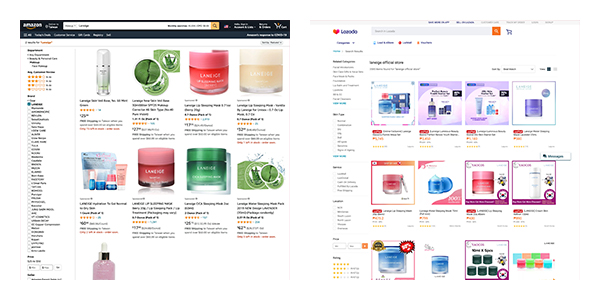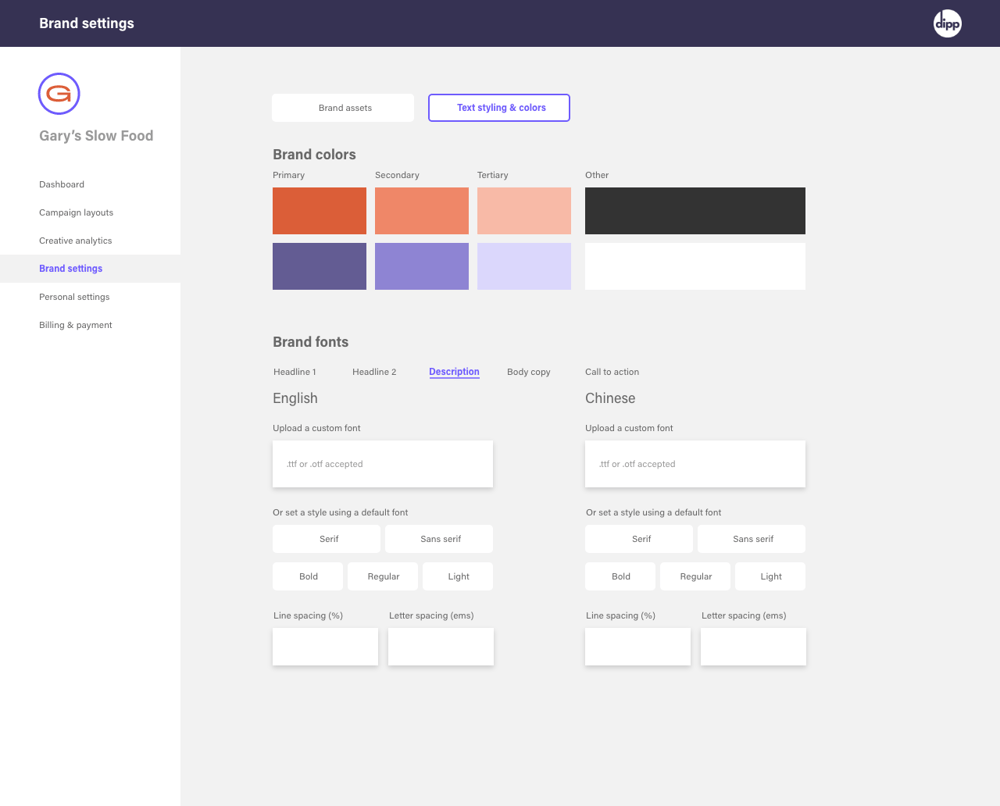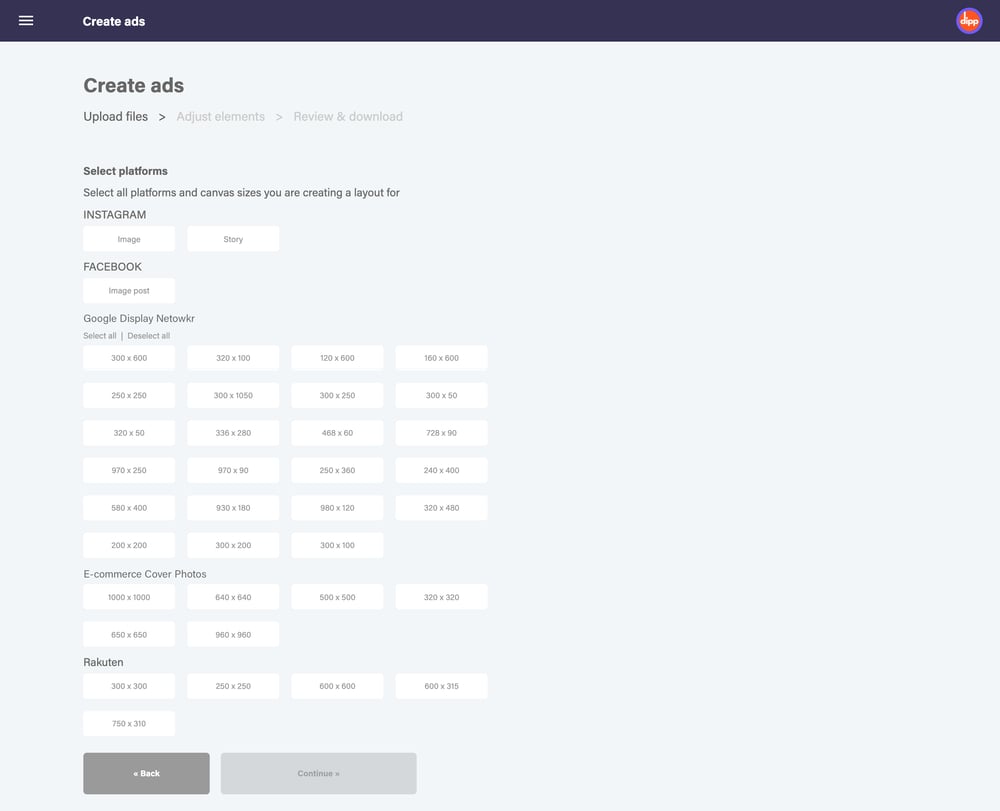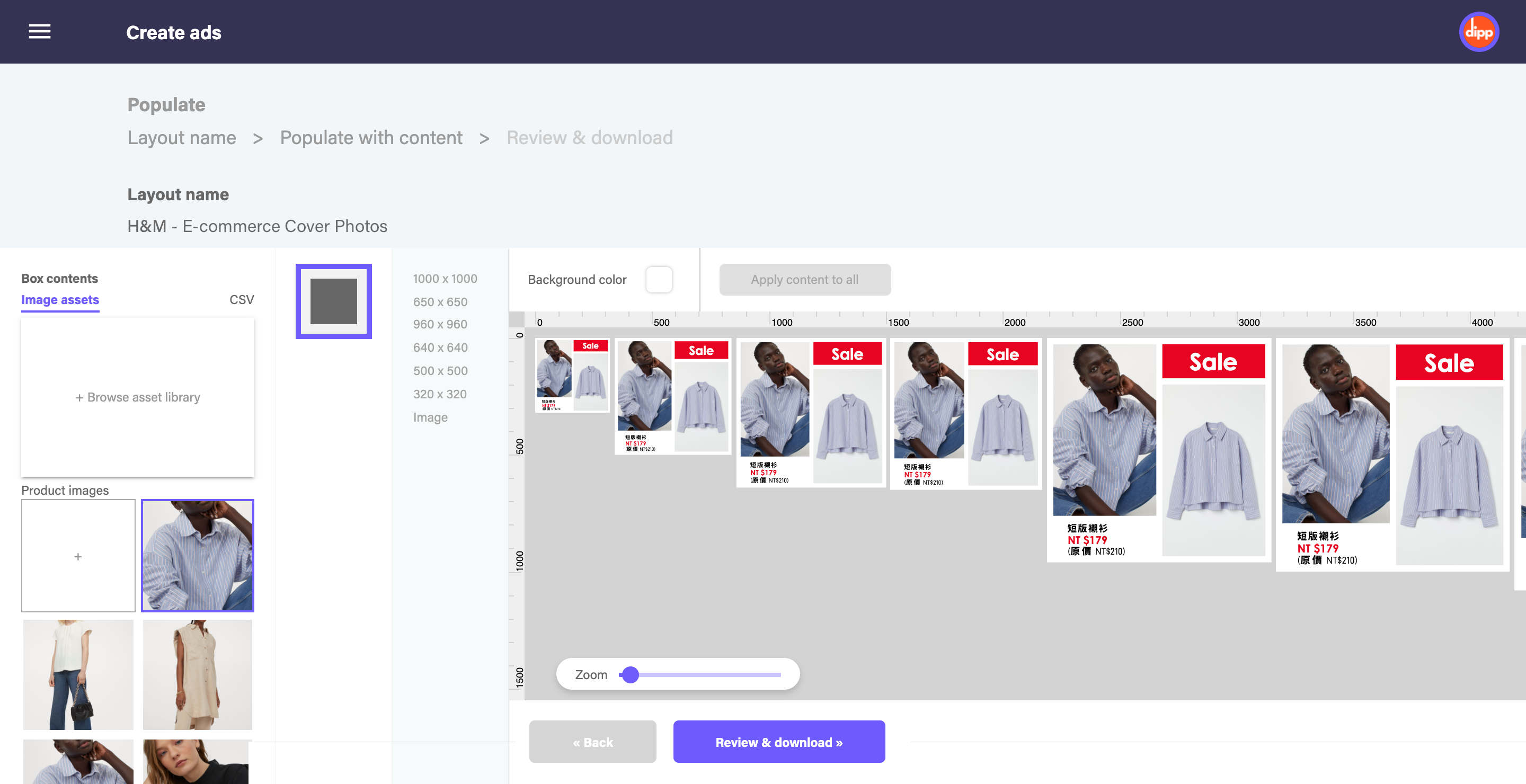As most of you who have landed on this blog or visited our website before know, dipp is a SaaS platform with an aim to transform visual design process into a more efficient (meaning how fast can we tackle all of the digital marketing visual regeneration) and effective (meaning how well these design decisions are capturing people's eyeballs) process. We do this with two main features - Design Analysis and Design Automation.
Before we talk about specifically what Design Analysis and Design Automation are, we need to set the scene and tell you a little bit about how e-commerce channels work in the APAC region.
What is it like to sell via e-commerce in APAC?
First of all, if you haven't heard, selling via e-commerce in APAC is an entirely different ballgame when compared to selling in the USA. Instead of the clean product photography that you see on Amazon, you’d see very busy graphics on Shopee, Lazada and marketplaces alike. 
Take the Korean skincare brand, Laneige, for example - its cover photos for Amazon US are against a white background with the products occupying over 80% of the entire image canvas. But for the same brand, on LAZADA Philippines, the cover photos have been enhanced with different decorative picture frames, promotional discounts, and giveaway items and some even have a background image behind the products.
Second of all, all eCommerce marketplaces in the APAC region have their own image format requirements, in terms of dimensions and file sizes. That means, if a brand is creating one cover image for a product, they need to regenerate the same thing in multiple different file formats. To emphasize the amount of work, over 80% of Western brands sell across at least 5 different marketplaces in APAC.
| MARKETPLACE |
IMAGE FORMAT |
DIMENSION |
FILE SIZE LIMIT |
| Shopee |
JPG, PNG |
1000 x 1000px |
Within 200 - 300KB |
| Lazada |
JPG |
1000 x 1000px |
Up to 3MB |
| Tokopedia |
JPG |
700 x 700px |
Up to 2MB |
| Qoo10 |
JPG |
800 x 800px |
Up to 1MB |
| Bukalapak |
JPG |
600 x 600px |
Up to 2MB |
| PChome |
JPG |
1000 x 1000px |
Within 200 - 300KB |
| momo |
JPG |
960 x 960 |
Within 50 - 250KB |
| Rakuten |
PNG |
1000 x 1000px |
Within 200 - 300KB |
| Yahoo Shopping |
JPG |
650 x 650 |
Within 50 - 150KB |
Last but certainly not least, brands sell a lot of products. On average, the B2C retail brands' SKU count is commonly between 500 and 2000. And if each one of these products comes with its own description and pricing, can you imagine redoing the key visual design as many times as there are products for sale?

How does Design Automation come in handy?
Now that you have an understanding of what selling in the APAC region is like for brands, let's take a look at how dipp's platform may come in handy. With all the big vision, image recognition, and machine learning tech talk aside, there are a few core features that we have developed specifically for design efficiency.
-
Your personal brand guidelines - Coming from our Western design training, we build everything from a brand guideline. You can see how gung-ho we are about this in our other article "Style Guide and Brand Uniformity in the Digital Age." Essentially it's a place for brands to define their most frequently used fonts, colors, logos and other rules.

From our observation by implementing brand guidelines, this can reduce design revision rounds by 60% because we eliminate the designer's subjective brand interpretation.
- Support of all image dimensions - By using our platform, you have access to all image sizes for all e-commerce marketplaces, social networks and display networks. That means, before building a layout, you can immediately select all the sizes that this layout has to accommodate. And even if you are not in charge of marketplace graphics, you can easily use this for your banner ads.

- Adobe Photoshop integration - With most brands having their in-house design teams, designers can easily port their layered Photoshop files onto our platform for mass production.
- Intelligent resizing - Once designers have finished mapping the Photoshop layers with a component type, such as primary product image, brand logo, headline, and call-to-action, our platform then takes a guess on how to reposition different elements so they fully maximize different ad formats.
- Batch image regeneration with Content Feed - Dipp can process up to 200 product images in a single workflow. That means, once the layout has been set up on our platform, a brand can upload 200 product images with their unique pricing and information via the use of our Content Feed, and our platform will reproduce the layout along with all the dimensions tied to it for up to 200 product images.

If your campaign has 50 products to promote, and you are promoting them using the 1200x628px Facebook post, 1080x1080px Instagram post, 1000x1000px on Shopee, 700x700px on Tokopedia, and 800x800px on Qoo10, you are able to create and download 250 images in one go.
How is Design Analysis incorporated into the workflow?
We've talked a lot about Design Automation, but where does Design Analysis come in? More importantly, how can a brand benefit from such a feature? Essentially, what Design Analysis does is break down each image and analyze them from the design perspective. We will get into depth about how we actually analyze each image later, but for now, let's see how a brand can use such a feature.
- Performance-driven layout suggestions - If you don't have an in-house design team to create the necessary key visuals that you need, you can explore our performance-driven layout presets and select any one of them to generate the required visual content. We automatically source from many industries, markets, online marketplaces, social networks and display networks to understand what the latest design trends are to generate these performance-driven layout presets. So if you find yourself without an idea, just select any preset that interests you visually, because any one of them is bound to attract eyeballs.
- Correlation analysis for your brand - Let's say you have a robust design team, it's still hard to say if what you are creating is actually working for your audience. Yes, you can run A/B tests, even A/B/C/D/E tests to see which design is working, but would you want to know the "why" that makes a design work? This is when you can actually submit your designs and previous media performance from Facebook, Google or any other platforms for our platform to deliver a report so you understand the correlation between your design decisions, such as how big to place your logo, and performance, like click-through rate.
Why are these features important to a digital brand today?
As designers working in the industry for the last decade, we witnessed great design transitions as part of the sales and marketing responsibilities. We still remember the days when design was done as a single monumental project to which we would devote 3 months to building a website with the vision that the website would be used for decades to come.
However, unlike the design days of yesteryear, designs today are being evaluated alongside marketing and sales performance. Whether or not a brand's marketing design is effective, is simply a matter of how well it works instead of how nice it looks. Hence, designers have acquired new responsibilities of constantly updating designs for landing pages, social networks, advertising and adding a lot more production repetition that can make this job less exciting.
That's why we hope what we are building at dipp can help lift some of the boring/fast-food-like design processes so that designers can focus on the more meaningful aspects of creativity. If you are a designer who shares a similar vision, we welcome you to give our platform a try by joining one of our weekly demo webinars.